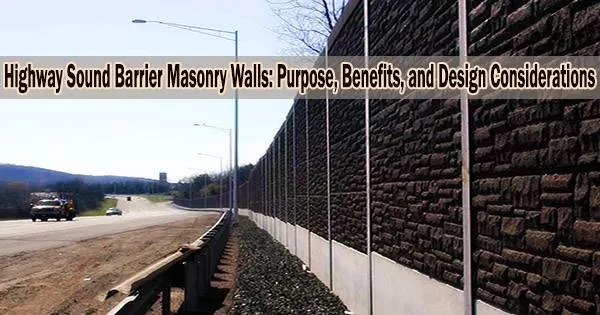Before sound reaches the receiver, highway sound barrier walls act as a sound energy absorber. Therefore, the sound barrier wall cannot fulfill its purpose unless it absorbs the necessary quantity of acoustic energy. The transmission of acoustic energy through a sound barrier wall depends on a number of factors, including the density and stiffness of the material used to build the wall, the angle at which sound energy is sent, and the frequency range.
What is Transmission Loss in Sound Barrier Wall?
The ability of materials to transfer noise is referred to as transmission loss, and it is correlated with the ratio of the sound energy at the source to the transmitted sound energy. The transmission loss of sound barrier materials increases when the weight of the material barrier surface is raised, taking into account highway noise and other noises in the highway noise range.
What is insertion loss in Sound Barrier Wall?
The difference between the sound before and after the barrier is built close to the highway serves as an indicator of how effective a sound barrier is. This measurement is called insertion loss. The insertion loss consists of five components which are provided by NCMA TEK and the components include:
- Sound wave diffraction around and over a barrier that is fixed in the line of sight between the listener and the sound source causes barrier attenuation.
- Transmission loss of sound through the barrier
- Decrease in barrier attenuation due to number of reflections as a consequent of double barrier.
- Attenuation protection through from other barriers between receiver and the source of the sound.
- Excess attenuation loss already received from soft ground cover.
Purpose of Highway Sound Barrier Masonry Walls
The reduction of risks that residents of big cities are exposed to is the main driver behind the installation of masonry highway sound barriers. Vehicle traffic that crosses metropolitan areas at high speeds and in big volumes is typically the source of the noise. The provision of noise abatement treatment in terms of acceptable noise diffraction and transmission loss will be necessary to reduce the level of the noise.
The federal aid highway program manual suggests several methods for reducing noise, including traffic management procedures, changes to vertical and horizontal alignment, obtaining property rights for the placement of sound-reducing equipment or buildings, and, finally, the placement of noise-reducing construction devices without regard to the outside or inside of the right-of-way for the highway.
Benefits of Highway Sound Barrier Masonry Walls
The most often used material for building sound barrier walls is concrete masonry. Concrete masonry has a number of admirable qualities, including flexibility in design, exceptional durability, outstanding structural capability, and both low construction and service life maintenance costs.
Concrete masonry comes in a variety of forms, hues, and surface textures. Because the sound barrier wall is a significant part of the highway, concrete masonry can play a very significant role in enhancing the aesthetic appeal of the road. This exceptional and unmatched aesthetic quality of concrete masonry makes it very difficult to find materials with similar features.
The vast power of concrete masonry to absorb sounds eclipses all other advantageous qualities stated above as the most superior and advantageous feature. In comparison to other materials, sound barrier concrete masonry is the most effective and best at reducing noise.
Insertion loss, which is the difference between the sound level before and after the wall is built close to the roadway, is a phrase used to describe the effectiveness of sound barrier walls.
Design Considerations of Highway Sound Barrier Masonry Walls
The masonry sound barrier for highways is constructed using pier and panel walls or cantilever walls. In addition to being more affordable than a cantilever wall due to reduced wall thickness and the lack of a continuous foundation, pier and panel walls are also easier to build. The designed panel is extended between piers. The lateral load computation for both cantilever and pier and panel wall is the same.
















